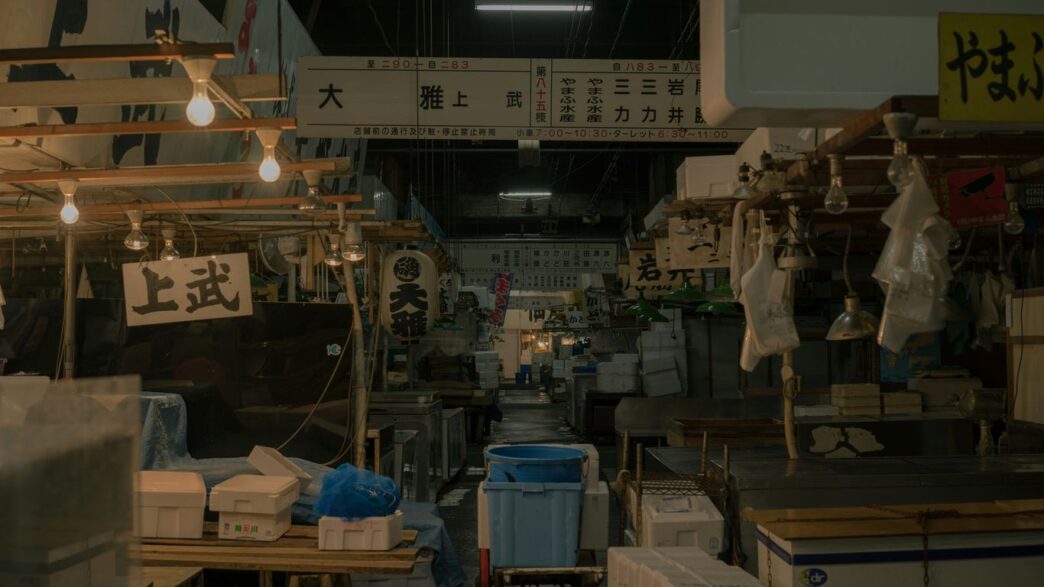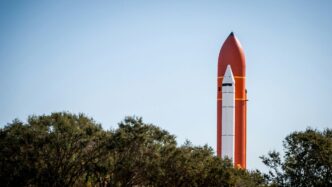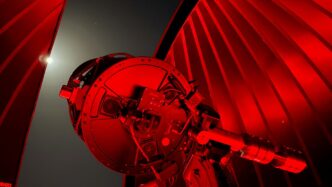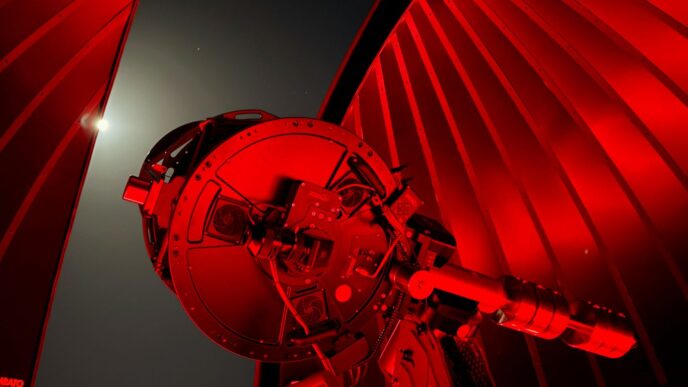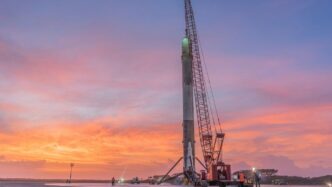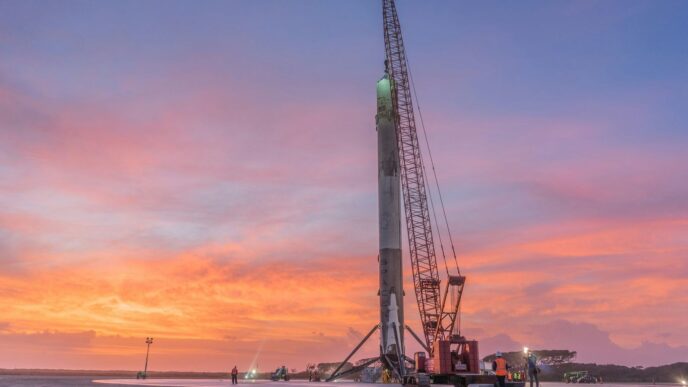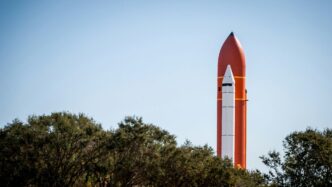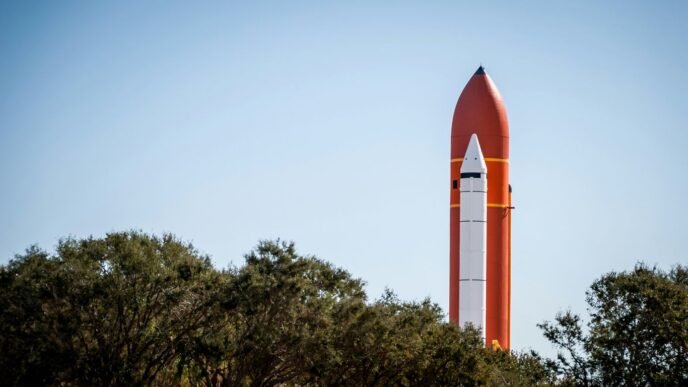Aerospace Lab’s State-Of-The-Art Manufacturing Facility
Torrance, California: A New Hub For Satellite Production
So, Aerospacelab just opened up a new factory in Torrance, California. It’s a pretty big deal because it’s designed specifically for making satellites, and it’s right in the middle of the busy aerospace scene in the Los Angeles area. They’ve been growing fast, and this place is meant to help them keep up with all the orders coming in from the U.S. It’s their first factory built from the ground up for their U.S. customers, which is a significant step.
Advanced High-Bay and Cleanroom Environments
This new facility is pretty impressive. It spans 35,000 square feet and includes specialized areas like high-bay sections and cleanrooms. These are super important for building sensitive equipment like satellites. Think of a cleanroom like a super-sterile operating room, but for space tech – dust and particles are a big no-no. They’ve kitted it out with the latest gear and are even thinking about using sustainable practices, which is good to hear. The setup is designed to be flexible, allowing them to build different kinds of satellites.
- High-Bay Areas: These are tall, open spaces needed for assembling large structures.
- Cleanrooms: Controlled environments to prevent contamination during assembly.
- Latest Technology: Equipped with modern tools for precision manufacturing.
- Sustainable Practices: Incorporating environmentally conscious methods.
Scalable Production Capacity for Growing Demands
One of the main points of this new factory is its ability to scale up production. Right now, they figure they can build about two satellites a week if they run a single shift. That might not sound like a lot, but for specialized satellite manufacturing, it’s a solid pace. This capacity is key because the demand for satellites is really taking off. They’re already planning to start assembling and testing systems for Xona Space Systems there soon. The goal is to be able to ramp up production quickly as more orders come in, without sacrificing quality. This flexibility is what allows them to handle everything from small custom jobs to larger constellation projects.
Innovations Driving Satellite Technology
Aerospacelab isn’t just building satellites; they’re rethinking how they’re made and what they can do. It all starts with their Versatile Satellite Platform (VSP) family. Think of it like a modular building block system for space. They have different sizes – VSP-50, VSP-150, and VSP-300 – that can be adapted for all sorts of missions. This means they can build satellites faster and more efficiently, whether it’s for watching the Earth or sending signals across the globe.
Versatile Satellite Platform Family
This family of platforms is the backbone of their approach. They’re designed to be flexible, so you can swap out different parts or add specific instruments depending on what the mission needs. It’s like having a standard car chassis that can be turned into a sports car, a truck, or a family sedan.
- VSP-50: Great for smaller, focused missions.
- VSP-150: A good all-rounder for many common tasks.
- VSP-300: Built for more demanding, larger payloads.
End-to-End Satellite System Solutions
What’s really neat is that Aerospacelab doesn’t just make the satellite body. They handle everything from the initial idea to getting the satellite up and running in orbit. This includes designing and building the payloads – the actual instruments that do the work, like cameras for Earth observation or antennas for communication. They also make their own avionics, which are the brains of the satellite, and these are built tough to handle the harshness of space.
Agile and Modular Design Principles
This is where the ‘agile’ part comes in. Because their satellite platforms are modular, they can be put together and tested much quicker than traditional methods. This means they can get a satellite designed, built, and ready for launch in a significantly shorter timeframe. This speed is a game-changer for customers who need to get their missions operational fast. It also means they can adapt to new requirements or technologies more easily, which is super important in the fast-moving space industry.
Vertical Integration and In-House Expertise

Control Over Supply Chain and Quality
At Aerospacelab, we really believe in keeping things close to home. This means we build most of our satellite components right here, under our own roof. It’s not just about having a cool factory; it’s about having total control. When you build everything yourself, from the tiny circuit boards to the big structural parts, you know exactly what’s going into each satellite. This way, we can keep a close eye on quality at every single step. It cuts down on surprises and makes sure that what we deliver is reliable. We’re not waiting on other companies for parts, which speeds things up a lot. It’s like cooking a meal with ingredients you grew yourself – you know they’re fresh and good.
In-House Development of Key Systems
We don’t just assemble things; we design and build the core technology ourselves. This includes things like the satellite’s brain (avionics), the basic structure (platforms), and even the special equipment it carries (payloads). We also write the software that makes it all work. Developing these key systems in-house gives us a lot of flexibility. If a customer needs something a bit different, we can tweak our designs without a huge fuss. It also means all the parts are made to work together perfectly from the start, which is a big deal in space.
Here’s a look at some of the main systems we develop:
- Avionics: The "brains" of the satellite, handling communication, navigation, and control. We build these to be tough, especially against radiation.
- Satellite Platforms: The basic structure and support systems that everything else attaches to. We have a few different sizes, like the VSP-50, VSP-150, and VSP-300, that can be used for different kinds of missions.
- Payload Integration: While customers often provide their specific scientific or imaging equipment, we design our platforms to easily integrate these payloads.
- Embedded Software: The code that runs directly on the satellite’s hardware, making sure all systems operate as intended.
Minimizing Integration Risks for Customers
When you buy a satellite system, the last thing you want is for the different parts not to work together. Because we build so much of it ourselves, we can test how everything fits and functions long before it ever gets launched. This "vertical integration" means we catch potential problems early. It saves our customers time and money because they don’t have to deal with complicated integration issues later on. We aim to make the process of getting a satellite into space as smooth as possible, reducing the chances of something going wrong during assembly or launch. It’s all about making sure the satellite is ready to go when it needs to be.
Global Manufacturing Footprint and Expansion
Strategic Locations for Responsiveness
Aerospacelab isn’t just building satellites; they’re building them where they’re needed. With factories in both Europe and North America, the company has set up a production network designed for quick action and large-scale output. This setup means they can respond faster to customer needs and market shifts, no matter where the client is located. It’s all about being ready and able to produce.
Europe’s Largest Satellite Factory Under Construction
Things are really ramping up in Europe. Aerospacelab is building what will be the continent’s largest satellite factory in Charleroi, Belgium. This new facility is a big deal, aiming to boost production capacity significantly. It’s designed to be agile and ready for any mission, anchoring their presence in Europe and supporting the continent’s growing space industry. They’re talking about a real industrial hub here.
Meeting Demands for Prime Constellations
Producing satellites at scale is the name of the game. Aerospacelab’s facilities are built to handle the high volume required for large satellite constellations. Their Torrance, California factory, for example, is a 35,000-square-foot space with advanced cleanrooms and high-bay areas. This facility alone can produce about two satellites each week on a single shift. This kind of output is key for supporting major projects and meeting the increasing global demand for space-based services. They’re set up to build everything from individual satellites to entire fleets.
Commitment to Mission Readiness and Reliability
TRL-9 Maturity Through Successful Launches
Getting a satellite into space and having it work perfectly is the whole point, right? At Aerospacelab, we don’t just aim for that; we build it into everything we do. We’re talking about Technology Readiness Level 9 (TRL-9), which basically means our systems have been proven in real-world space missions. It’s not just theory or lab tests; it’s satellites that have actually launched, operated, and done their jobs. This flight heritage is super important because it shows our designs are solid and dependable when it counts.
Dual-Use Expertise for Commercial and Institutional Missions
We work with a lot of different folks – from private companies wanting to launch new services to government agencies with specific national security needs. The cool part is that the same high standards and reliable technology go into both. Whether it’s for commercial Earth observation or a defense-related mission, the core satellite systems are built with the same attention to detail. This means our commercial clients get the benefit of technology developed for the most demanding applications, and institutional clients get systems that are not only robust but also adaptable.
Ensuring Sovereignty and National Defense Requirements
For many countries, having their own space capabilities is becoming a big deal. It’s about having control over their data, their communications, and their security. We help with that. By building satellites and systems that can be manufactured and operated domestically, we support national sovereignty. This is especially true for defense applications where having a secure, independent space infrastructure is key. We understand the unique needs of national defense and build our systems to meet those stringent requirements, providing a reliable asset for security and strategic autonomy.
The Future of Space Manufacturing at Aerospacelab
Looking ahead, Aerospacelab isn’t just building satellites; they’re shaping how we access and use space. They’re really pushing to make space more available and less of a headache for everyone involved.
Pioneering Indigenous Constellations
One big thing they’re working on is helping countries build their own satellite systems. Think of it like a country wanting its own internet or communication network, but using satellites. Aerospacelab is setting up the factories and the know-how so nations can create these systems right at home. This means more control and less reliance on others.
Bolstering European Strategic Autonomy
Speaking of control, Europe is a major focus. They’re building what will be Europe’s largest satellite factory. This isn’t just about making more satellites; it’s about giving Europe the ability to be more independent in space. Having this big factory means they can respond faster and develop their own space capabilities without depending on outside help. It’s a pretty significant move for European space ambitions.
Making Space Accessible and Affordable
Ultimately, Aerospacelab wants to bring down the cost and complexity of getting into space. They’ve already got a good track record, with several satellites successfully launched and working. Their approach uses smart design and building things in-house to cut down on expenses and potential problems. They’re aiming for a future where more organizations and even smaller countries can afford to have their own presence in orbit. It’s all about opening up the final frontier for more people.
Looking Ahead
So, Aerospacelab is really making waves in the satellite world. They’ve got this new factory in Torrance, which is pretty big, and it’s all about making more satellites faster. It seems like they’re set up to handle a lot of different jobs, from building small satellites to bigger ones, and they’re doing a lot of the work themselves. It’s kind of cool how they’re growing so quickly, especially with their plans for that huge factory coming online soon. It feels like they’re really trying to make space stuff more accessible and build up capabilities right here in the U.S. and in Europe. We’ll have to see what they come up with next, but it looks like they’re aiming for some big things.


